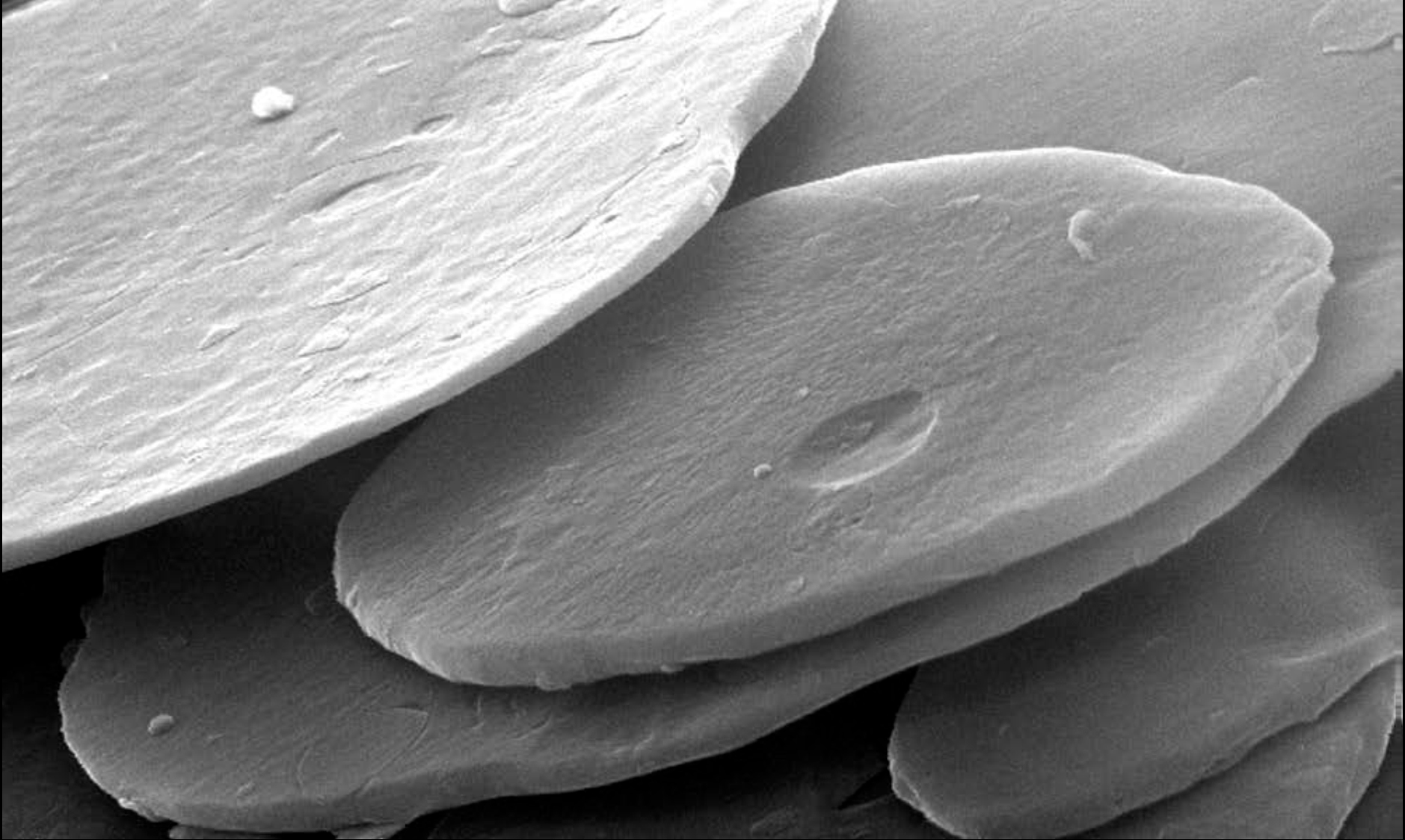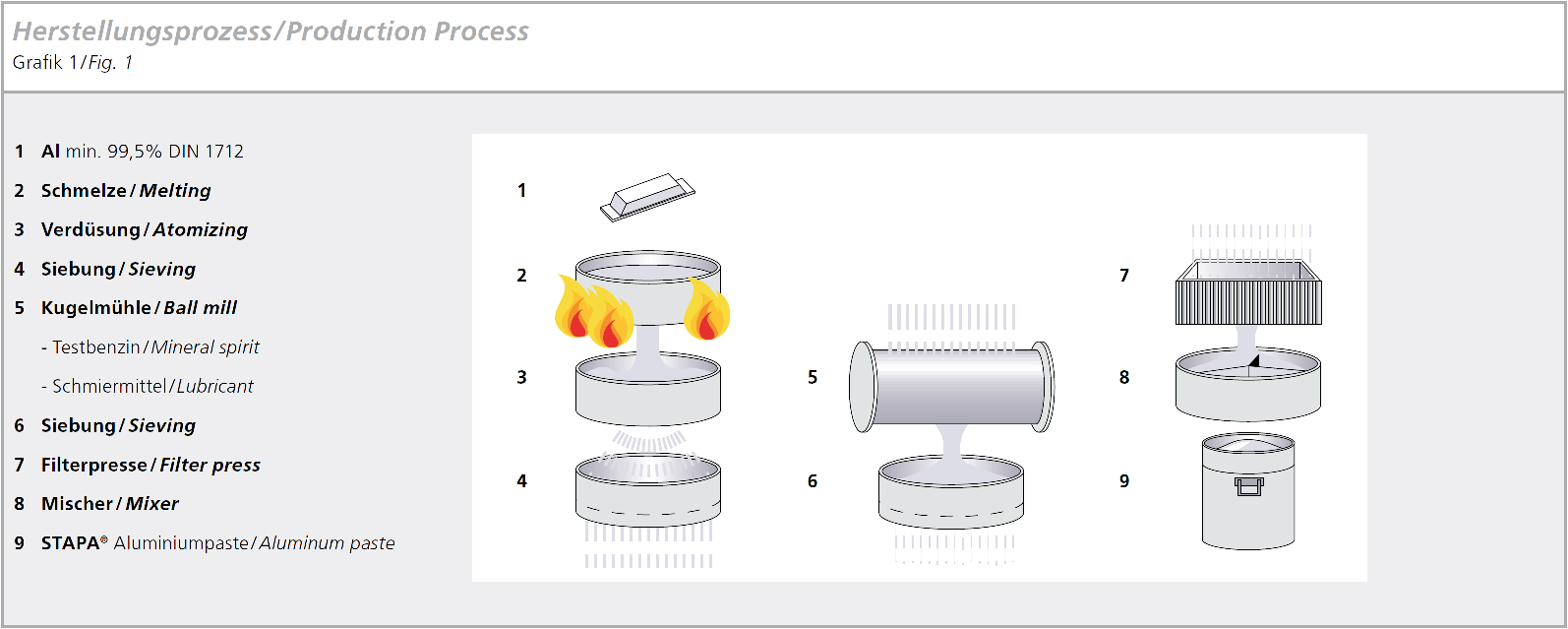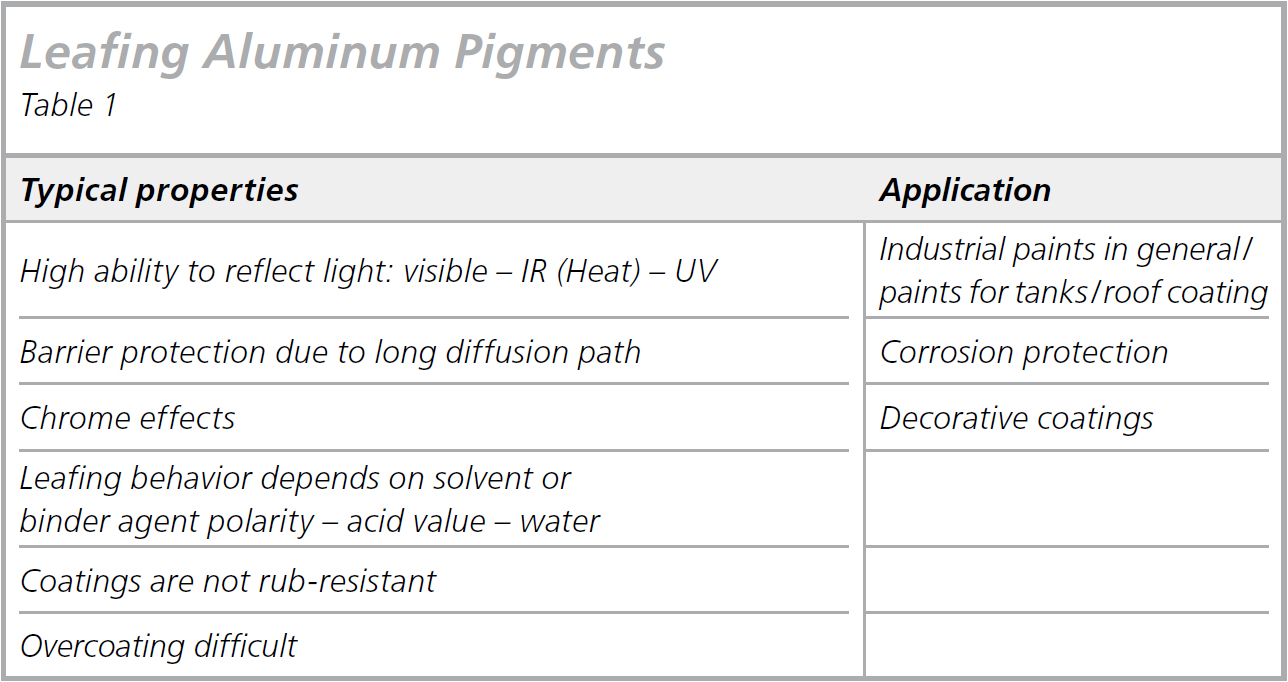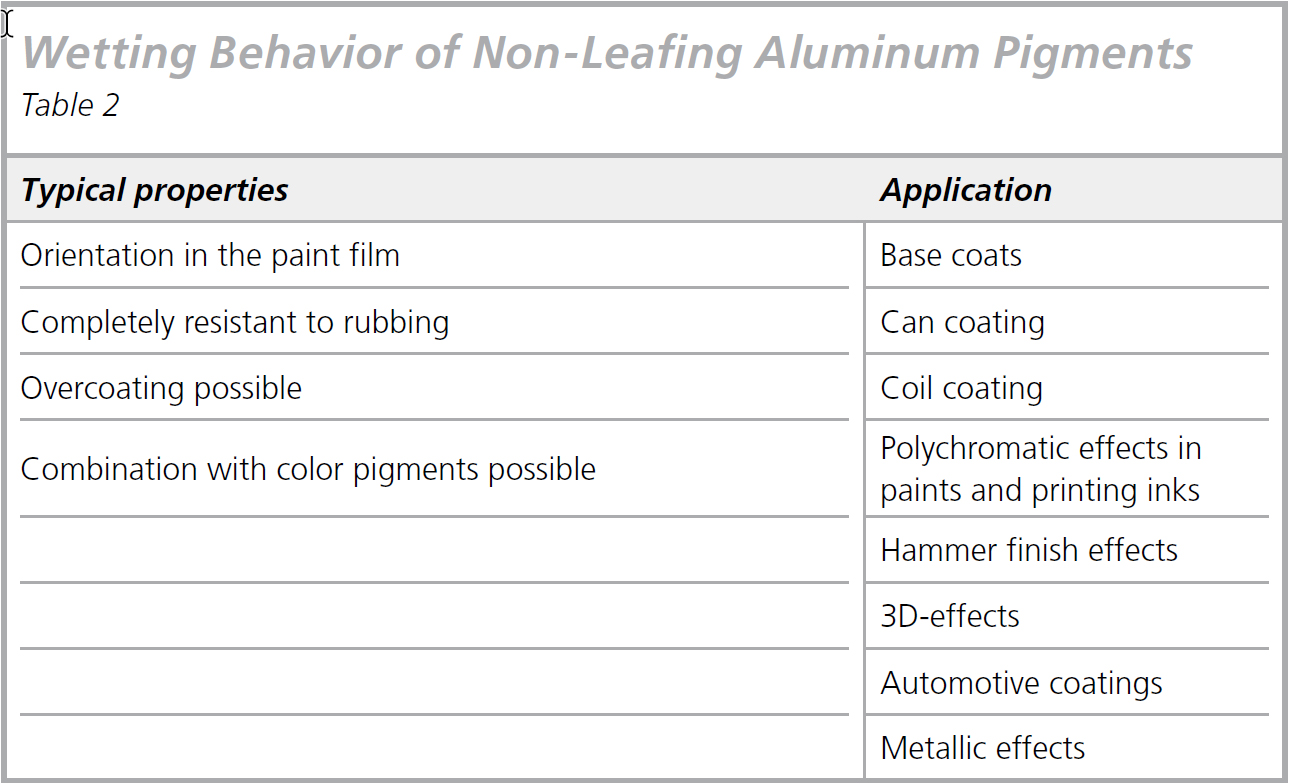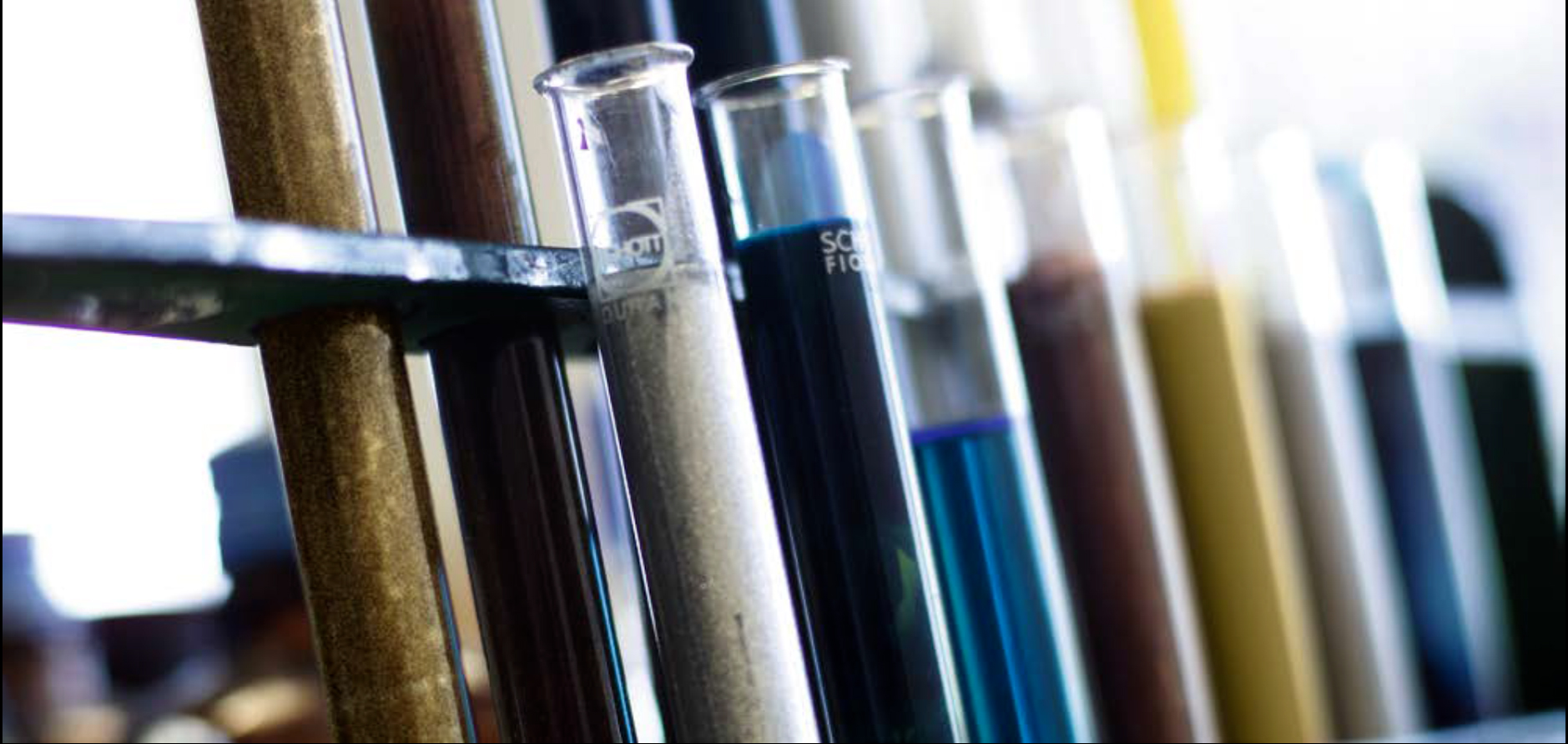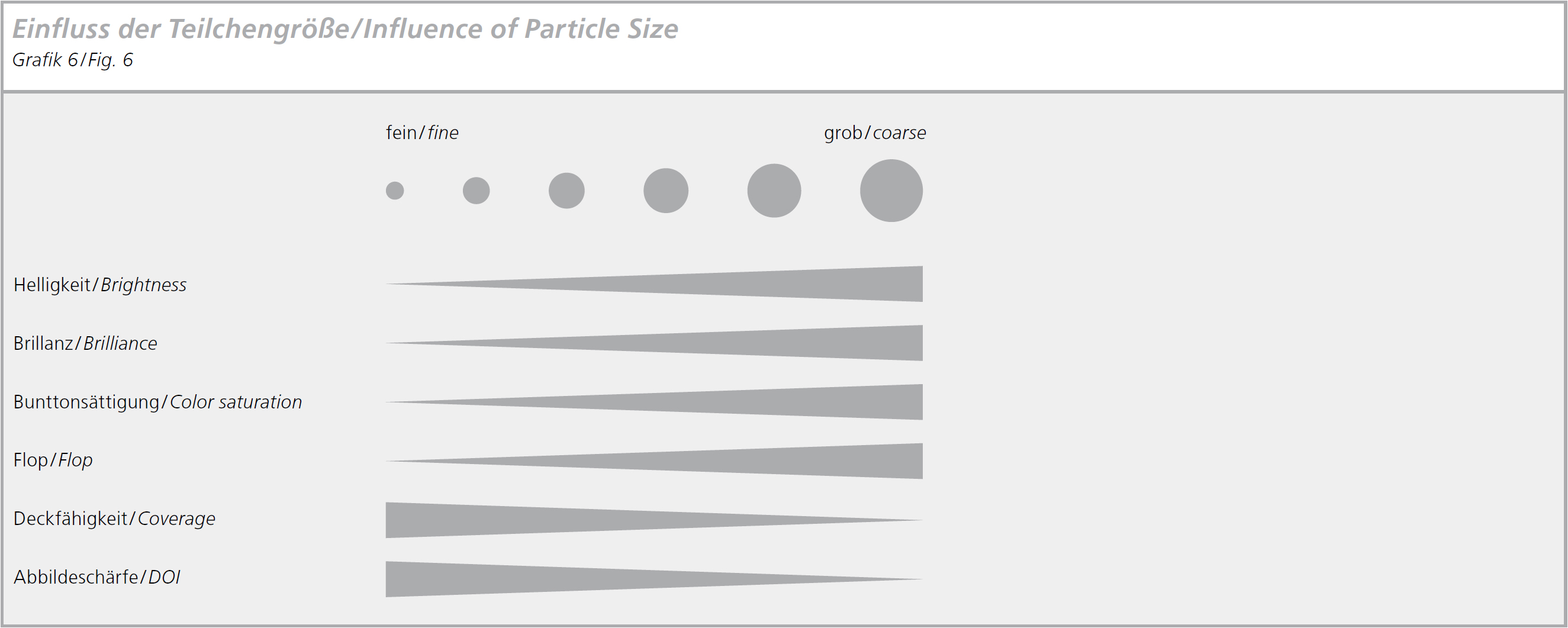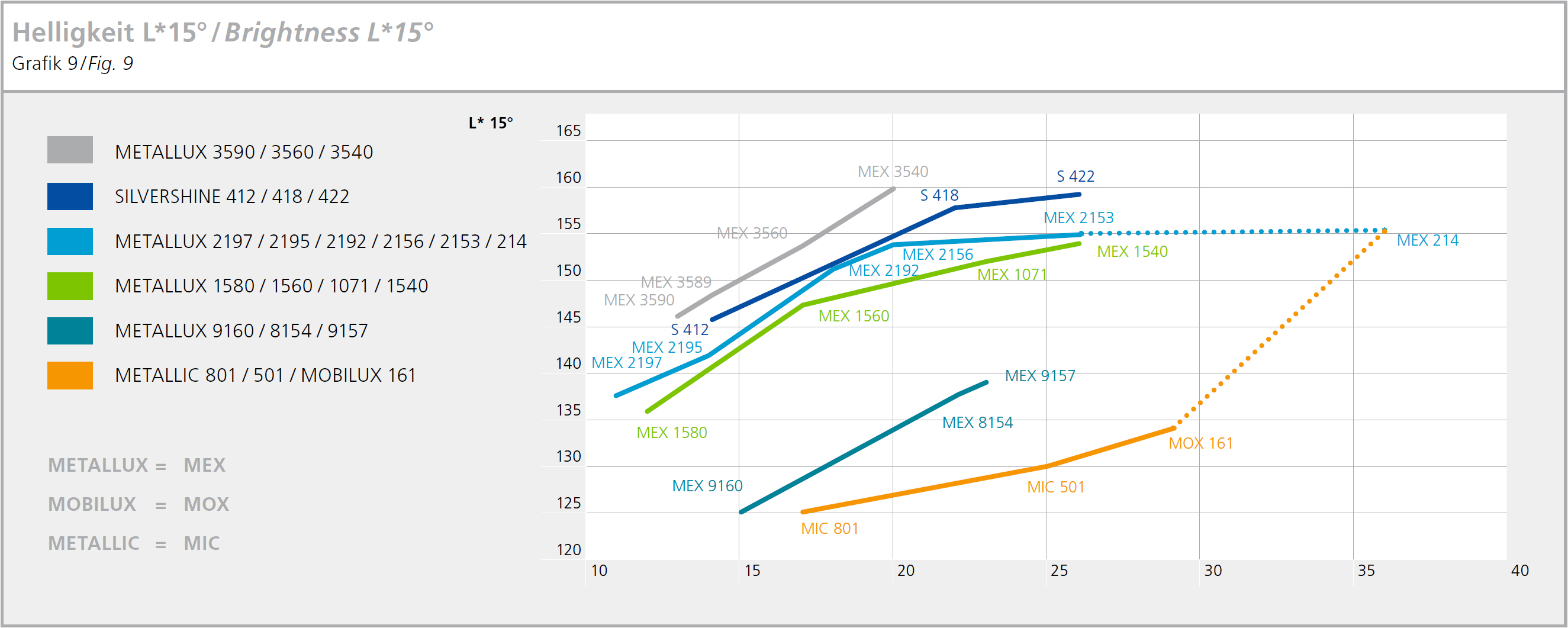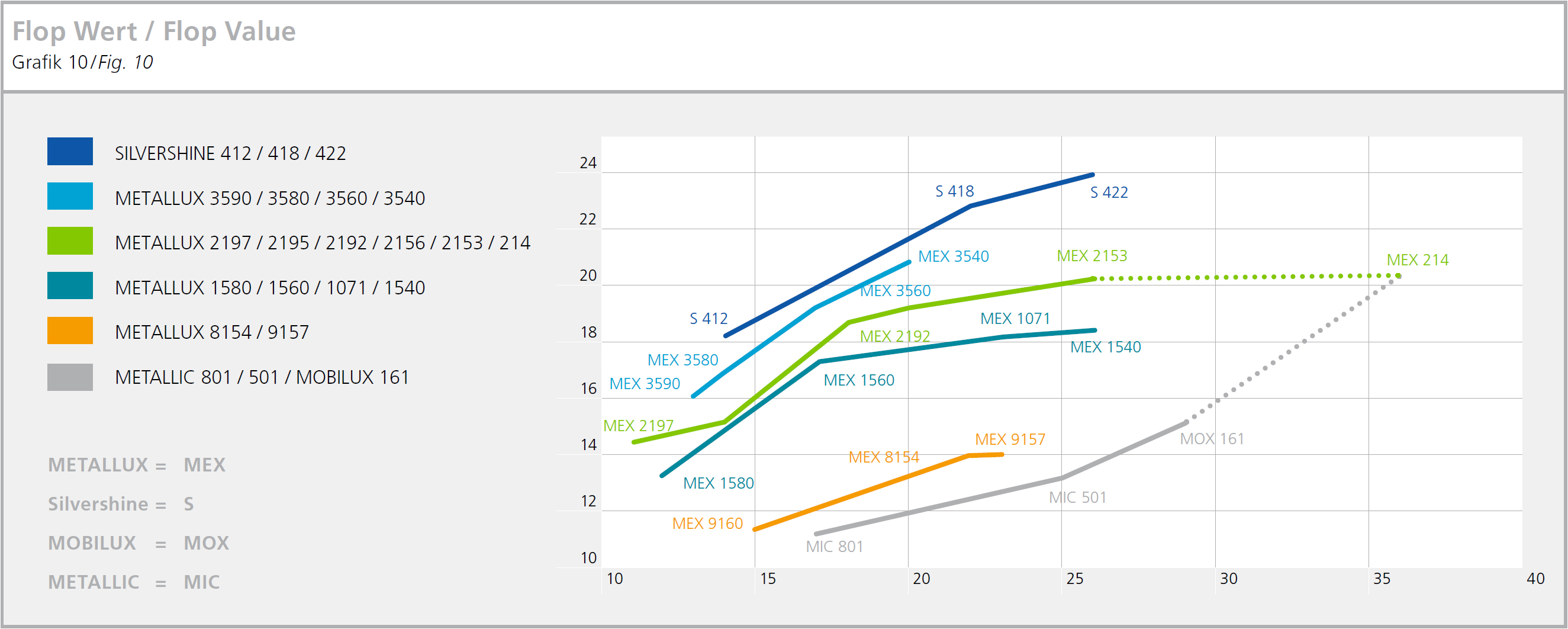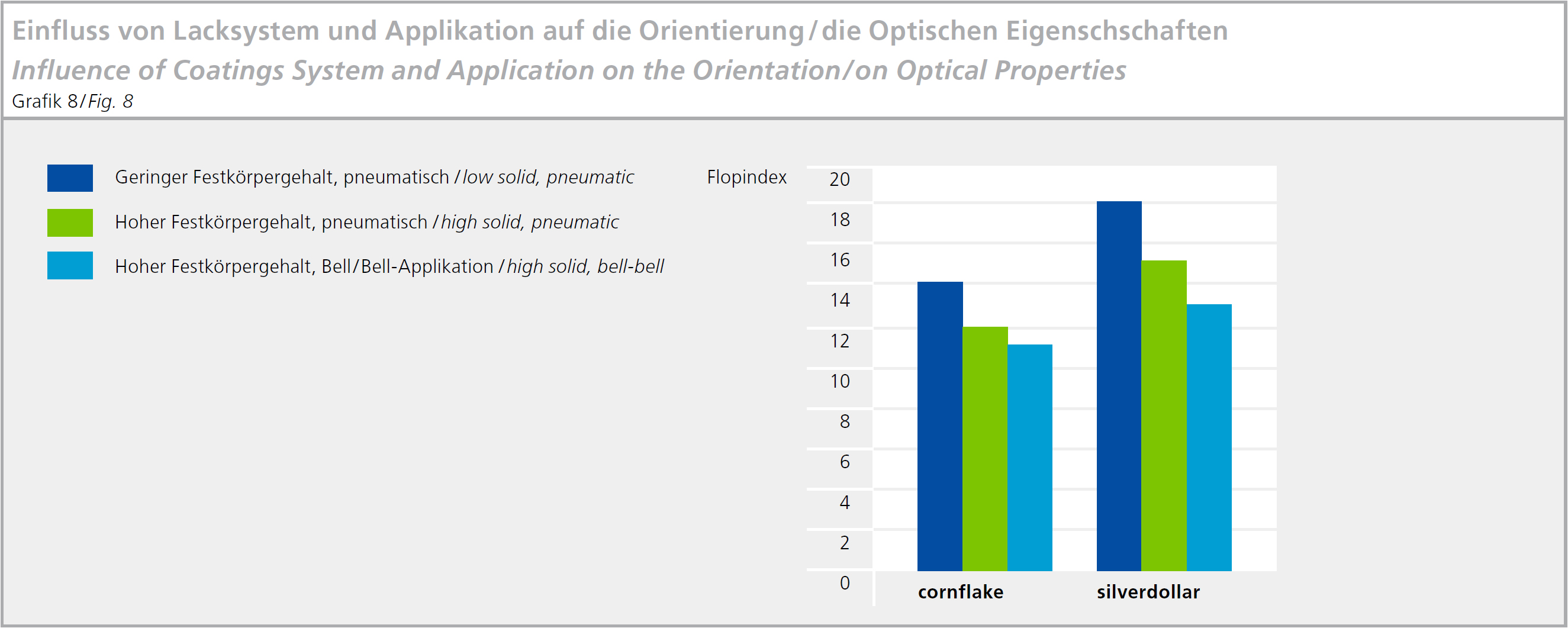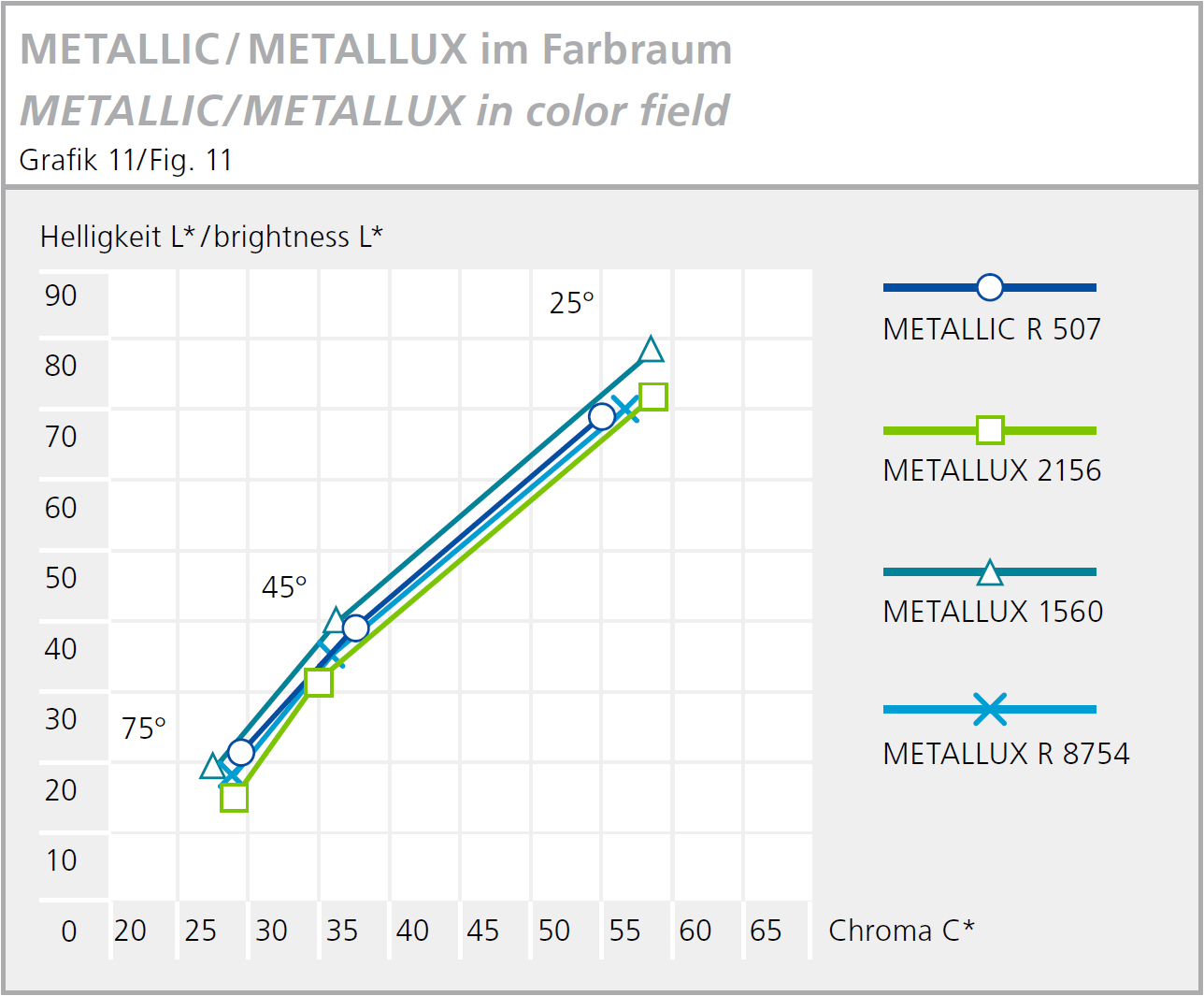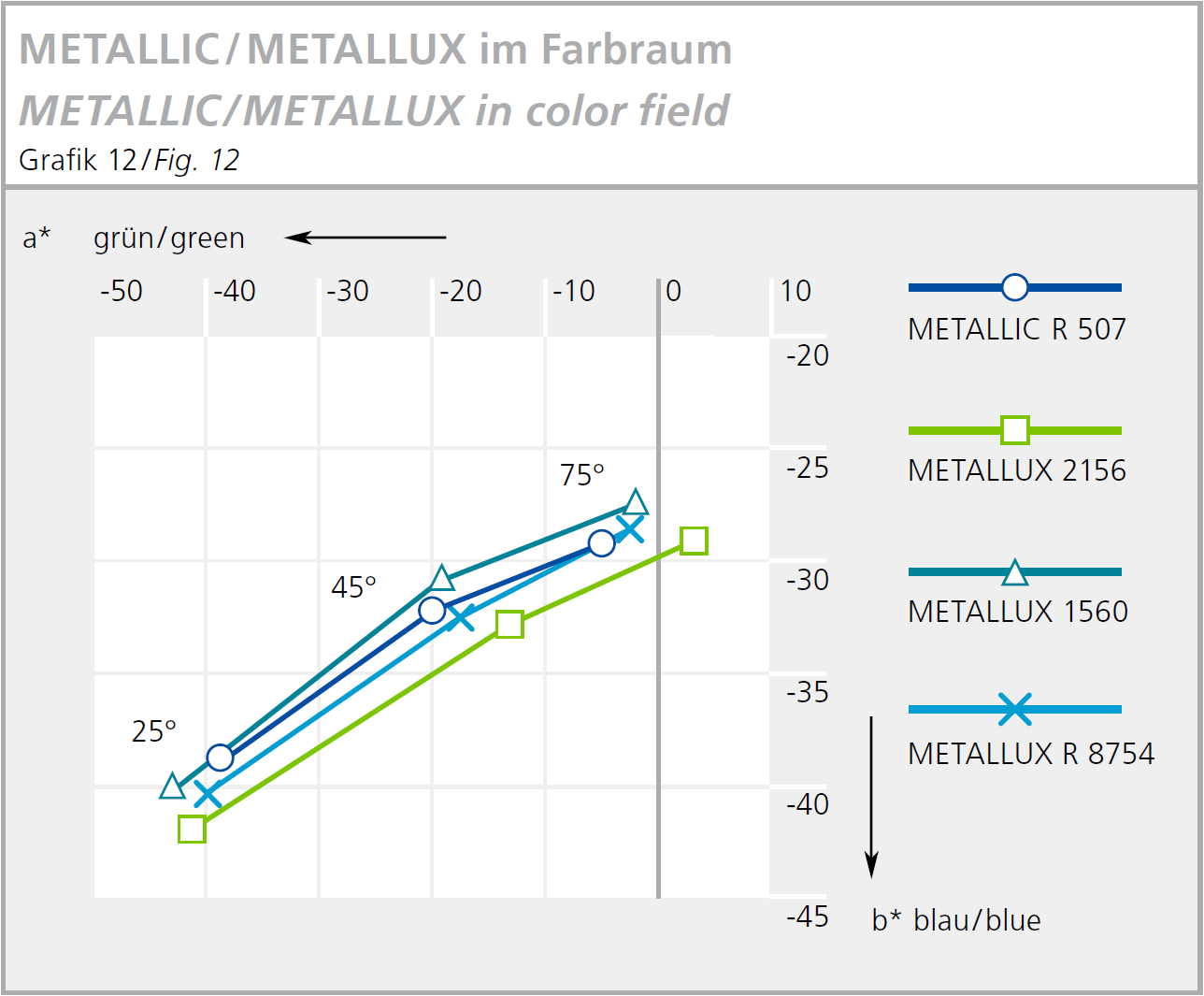Adding suitable wetting agents may improve the processing, i. e. the wetting and separating of the pigments is speeded up. Consequently, the paste is more stable, and the risk of a pigment agglomeration is being reduced.
Chlorinated hydrocarbons are not suitable, as due to unfavorable conditions they can split off hydrogen chloride which in turn would react with the aluminum pigment.
It is important that the solvent does not contain any water to prevent a reaction of unstabilized pigments with water.
For easier processing, it is advisable to start with the aluminum pigment paste and after this add gradually the solvent while stirring. This premix can either be homogenized after a while (“soaking of the pigment paste”) or immediately with a stirrer (dissolver). When all pigments are fully dispersed, the premix will show a thick appearance.
The following production steps are suggested:
• First, put the pigment paste in the dispersion vessel, and gradually add the solvent while stirring.
• After homogenization, examine the pigment slurry for undispersed paste residue.
• The coating will be adjusted and further components added. Add solvent and other ingredients if necessary (binders, additives etc.).
In many cases it is necessary to reverse the processing procedure, i.e., to add the predispersed metallic effect pigment to the binder. The reason is a tendency to concentrate, which leads to pigment agglomeration.
Therefore, it is essential to carry out laboratory tests to determine the correct order of manufacturing a coating. During the whole processing it is important, that the paste is covered as much as possible to minimize the evaporation of the solvent. Otherwise, agglomeration might occur.





